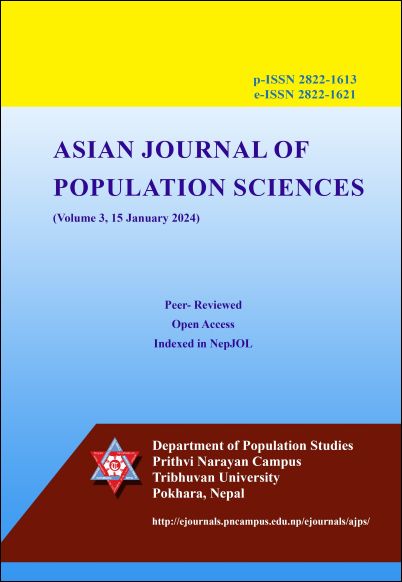Female-headed household characteristics and poverty levels in Namibia: An ordinal probit analysis of the 2015/16 Namibia Household Income and Expenditure Survey
DOI:
https://doi.org/10.3126/ajps.v3i1.61828Keywords:
Female-headed household, poverty levels, ordinal probit, poverty line, NamibiaAbstract
Poverty incidence in Namibia is higher amongst female-headed households (46%) compared to male-headed households (41%). However, this situation is further worsened by females in households increasingly being forced to play multiple, conflicting roles after losing their spouses, and to work in marginal, part-time, informal and low-income jobs due to their lack of access to high-paying jobs, while having to take care of children, siblings and sometimes parents with no form(s) of assistance. In this study, a cross-sectional quantitative study design of the 2015/16 NHIES and an ordinal probit model was used to examine the household characteristics that contribute to poverty among female-headed households in Namibia, as well as their effects on the households’ poverty levels. Results from this study showed that characteristics such as region (p<0.001), main language spoken at home (p<0.001), main source of income (p=0.009), location (p=0.016), and highest level of education (p=0.005) had significant associations with the household poverty levels. Additionally, female-headed households in the urban areas in the Hardap, Otjozondjupa and Zambezi regions, whose main languages spoken were English, German, Zambezi and other languages, with tertiary education and main source of income from commercial farming and other sources were less likely to be severely poor and more likely to be not-poor. Therefore, it is recommended that the Namibian government and policymakers further improve the livelihood of women, especially those heading households in other regions, in terms of a comprehensive social development strategy that covers the immediate needs for short-term and long-term needs of these women.
Downloads
Downloads
Published
How to Cite
Issue
Section
License

This work is licensed under a Creative Commons Attribution-ShareAlike 4.0 International License.




